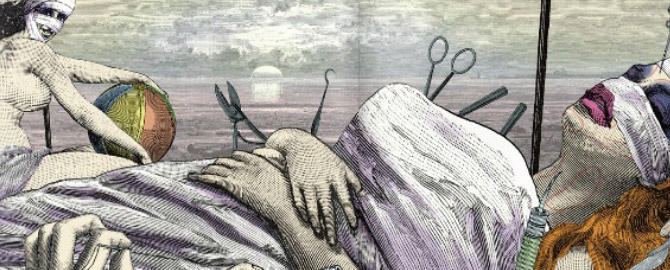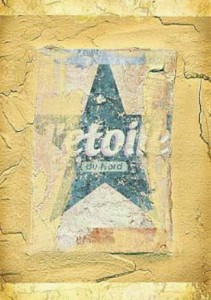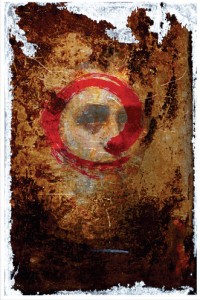Kim McGillivray describes himself as an illustrator, art college lecturer, photographer, occasional designer, Alpine cyclist, cider-maker, pumpkin grower and former shinty-player. His background and interests are as varied as his ability to create imaginative, diverse and wonderfully composed images. A talent that is highlighted by his achievements. McGillivray has designed book covers and illustrations for some of the biggest names on todays bookshelves- Muriel Spark, Peter Carey, Gil Scott-Heron and Iain Banks.
His work can be humorous political, contentious and/or topical. McGillivray uses a wealth of techniques, frequently displaying a Fine Art bias, in particular, when using mixedmedia and collage. In doing so each image captures a unique quirkiness.
In His own words
What are you currently working on?
Right now, I have a break between commissions. There are a few offers bubbling under but they haven’t come good yet. In the meantime, I’m continuing with an ongoing, self-motivated collaboration I’m conducting with a writer. He’s a commercial copywriter and we’ve worked together upon a number of jobs with recent ones signaling to us the possibilities of text-image collaboration/interaction.
I see this as valuable “lab-time” where I can explore new ideas without any clients’ influence. Introducing new methods does not always get a good reception on commercial projects (depends upon the client/designers one’s working with). So, if I’m to avoid getting stale, I see this as a productive enterprise. With it being with a coworker, it means that I won’t drift aimlessly and our material, which we frequently exchange, serves as a stimulus to each other.
Beyond that, we don’t yet know what appearance / format any future outcomes will take. It’s still rather formative. I can reveal that I’m taking this as an opportunity to explore new platforms that allow motion and interaction.
Your images mostly use mixed-media, fusing photographic collage with Fine Art materials and techniques.
Pulling from so many resources, how you select what to use and what to disregard from your experiences?
I’m not sure there’s been a conscious choice, rather a development of (and a pursuit towards) visual language that is right for me. I’d like to be open minded about what influences me as an image-maker and it’s true that not much of that is commercial illustration. As a student, my main influences were varied across different fields e.g. Mark Rothko, Robert Rauschenberg, Georges Roualt, Robert Frank, Vaughan Oliver, Russell Mills, Max Ernst, Antoni Tapies. Personally, I believe that it’s important that we’re not culturally narrow-minded.
My education in Edinburgh embedded that philosophy. After studying a year of foundation art & design (sculpture, drawing, ceramics, interior design- all sorts), I did another year of 5 Visual Communication disciplines which led me to finally specialise in Illustration and Photography for 2 final years. So that broad experience introduced me to many things and discouraged narrow specialisation in just one field.
Ever since, when I’ve explained to people I’ve met that I’m an illustrator, they generally assume pen-and-ink stuff which is not really what I’ve ever been about. I don’t know how rebellious I was at art college but I was the student in the corner of the illustration / graphics studio with a blow-torch and an assortment of workshop/construction tools.
Working with so many personalities who write about different genres, for different ages, all having different visions, what are the most challenging aspects of working as an Illustrator?
It’s not necessarily challenging if one’s willing to put in the research and to familiarise one’s self with the subject matter. That makes the job quite interesting in fact- lifting the lid on a different topic each time and learning new things. Once upon a time, there was no internet- I’m of a vintage that predates all that instant research and it meant going to the library and trying, if possible, to get the right books about a subject. Sometimes, research involves primary sources which can lead to all sorts of unexpected experiences and insights. In my experience of teaching nowadays, research invariably means Googling something- brilliant that it’s so instantaneous and varied (and unverified!) but it does remain to be a secondary source material and so I encourage students to go out and experience first-hand encounters with their subject matter.
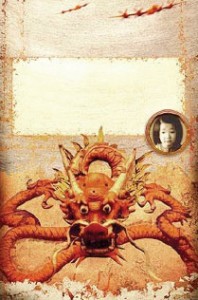 As a Fine Artist I always try to instill the importance of Drawing to my students, encouraging them to use drawing as the foundation to their work. As an Illustrator what disciplines or media do you find integral to the work why?
As a Fine Artist I always try to instill the importance of Drawing to my students, encouraging them to use drawing as the foundation to their work. As an Illustrator what disciplines or media do you find integral to the work why?
Drawing is still very big in Scottish Art Colleges. I still draw a great deal when designing and conceptualising even though the finished product might use various means. It’s still hugely prevalent in Illustration (but doesn’t solely define illustration) with regard for drawing making something of a revival after a decade or more of digital influences. I don’t see digital imaging as a threat (as some did initially) or as a choice. Again, our students nowadays are relaxed with both skill-sets and it’s not a black or white choice- they have an appreciation that drawing and digital skills are both useful.
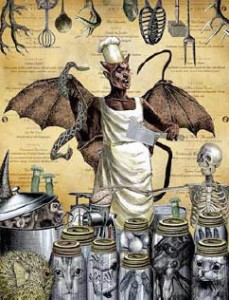 The digital means to add value to one’s imagery and to self-publish are also very empowering. Illustration students nowadays see themselves as much more in the driving seat in terms of putting their work into circulation and generating an audience. Arguably, the illustrator’s role has traditionally been rather passive to designers and publishers- now, the gatekeepers of the media channels are being circumvented and that is because of digital tools, technologies converging, the internet, the social web, self-publishing, blogs and so on.
The digital means to add value to one’s imagery and to self-publish are also very empowering. Illustration students nowadays see themselves as much more in the driving seat in terms of putting their work into circulation and generating an audience. Arguably, the illustrator’s role has traditionally been rather passive to designers and publishers- now, the gatekeepers of the media channels are being circumvented and that is because of digital tools, technologies converging, the internet, the social web, self-publishing, blogs and so on.
 How did you move into Illustration and what advice would you give to aspiring illustrators?
How did you move into Illustration and what advice would you give to aspiring illustrators?
I needed a break after Art College so I worked in a record shop. After 6 months I was ready and eager to investigate practicing as an illustrator. I went part-time and starting circulating my portfolio- I gave it 6 months to see if it had any future. That, unfortunately, was the woeful extent of my business plan almost 20 years ago. I suppose I was always thoughtful of my progress and what future plans might be and I continue, I suppose, to view progress / objectives in 6 month cycles still.
Regarding illustration nowadays, I feel that it’s a fantastically dynamic time due to the breakdown / reorganisation of media industry hierarchies. There are, however, a lot of image-makers out there and so competition is stiff. Over-supply also means that prices are low and business terms are often skewed against the image-maker. For these reasons, some will find a career in illustration as tough as it’s ever been.
What do you look for in a ‘good’ illustration?
When I’m teaching, it’s originality, clear evidence of thought behind the image, consideration of how the imagery relates to the content (that’s different to just showing what the writing’s already stated), proof that more than one proposal has been pursued, technical innovation / excellence. I would hope that the illustrator was more than just a “picture-monkey”, but somebody who feels sufficiently motivated to consider how they might apply their work once it’s been created. Slavishly adopting existing illustration styles is best avoided, the purpose of illustration study is not to “find a style”- as many think it is. I feel that students should emerge from college into practice aiming high to reshape the scene with their innovations.
How has your practice change over time? If so how?
Yes, initially there were no digital methods and my work combined illustration, image-making and photography in decidedly low-tech means. There was no international market, I was Edinburgh illustrator serving the Edinburgh market (plus London at a stretch, if I got my artwork on an overnight train)- now I have clients around the world and I can send my work anywhere digitally, free. I used to pound the pavements a lot with my portfolio and meet and greet art directors. Now, I find, not only should one have a website but one should be marketing on social media too.
Change is always ongoing and not always clear nor simple. I have taught a fair bit and enjoy it hugely- working with students is fantastic and I take much from it that informs / motivates my own work. I feel that I’m clearer about my subject because I have to think about / discuss it so much. I have, however, in recent years fought to maintain a good sense of equilibrium. Since recently off-loading some commitments I find myself re-emerging to an altered landscape for which I’m keen to develop my “product” to exploit new, emergent possibilities. A little bit scary, but it’d be dull otherwise.
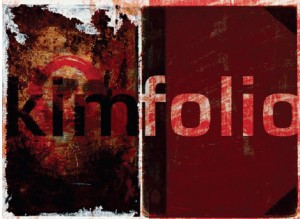 Kim McGillivray is Scottish, living in Edinburgh. McGillivray graduated in 1992 from Edinburgh College of Art with a BA (Hons) in Illustration & Photography. In addition to his commissioned illustrations, he Lectures at Duncan of Jordanstone College of Art, University of Dundee, where he teaches art students to degree level education that are especially keen on Animation, Graphics and Illustration.
Kim McGillivray is Scottish, living in Edinburgh. McGillivray graduated in 1992 from Edinburgh College of Art with a BA (Hons) in Illustration & Photography. In addition to his commissioned illustrations, he Lectures at Duncan of Jordanstone College of Art, University of Dundee, where he teaches art students to degree level education that are especially keen on Animation, Graphics and Illustration.
All images courtesy of Kim McGillivray
www.kimfolio.com
For more information on Hong Kong Art Tutoring please contact Gail Deayton +852 9722 8353
gd@gaildeayton.com

